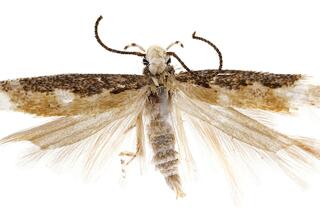We Eat What We Are, Sort of
- Share via
We have plenty of words for body parts we can see, from nose to toes. But when doctors started studying the parts we’ll never see (or hope we won’t), they had to make up names for them. To a surprising extent, they chose food-related names.
This started with the placenta, which was named for an ancient Roman cake that had a cheese filling and was never, ever frosted; think of a calzone, only round. Then there were the various glands, which get their name from the Latin word for nut, since they tended to be round--rounder than muscles or tendons, anyway. A particular bump on the parietal bone of the skull is called the truffle ( tuber parietale ).
For the record:
12:00 a.m. July 11, 2001 For The Record
Los Angeles Times Wednesday July 11, 2001 Home Edition Food Part H Page 2 Food Desk 1 inches; 23 words Type of Material: Correction
Misidentified bone--In “We Eat What We Are, Sort Of” (July 4), the location of the ethmoid bone was incorrect. The ethmoid bone is found in the skull, not the neck.
The pisiform bone is a pea-shaped bone in the wrist, and there are sesamoid bones buried in certain tendons of the foot. The brain has an almond-shaped amygdaloid body, and there’s even a structure in the brain stem called the olive. Think about that next time you’re drinking a martini.
Then there’s the ethmoid bone of the neck, which looked like a sieve (Greek ethmos ) to doctors, though maybe not to you or me. Hey, they thought the kneecap looked like a pan (Latin patella ).
And finally there are the trapezium, a small bone near the base of the thumb, and the trapezius, a muscle in the upper back. Both names come from the Greek word for table--as does the word “trapeze,” which gives you an idea how far people can reach when coining a word.

